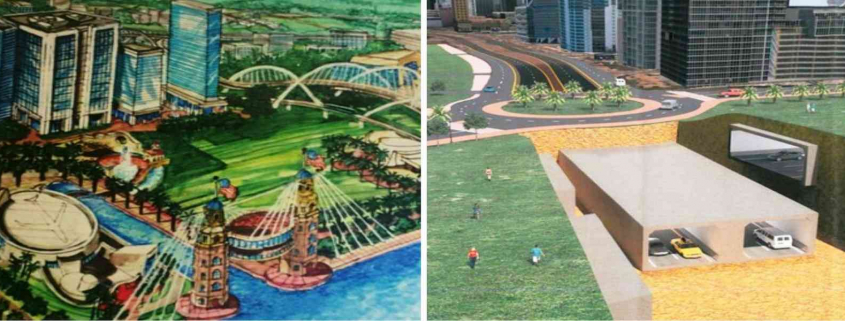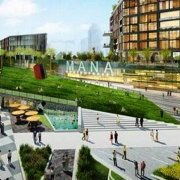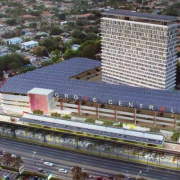Downtown Miami has changed immensely in the past 20 years, shifting from a sleepy business district to a bustling bayfront of condo high-rises, museums, and arenas. But one thing has remained constant: the traffic-clogged artery of Biscayne Boulevard dividing most of downtown from the waterfront.
Next week, city commissioners will consider a study on one way to change that: burying the road and I-395 underground, potentially creating an uninterrupted green space.
“It’s really gaining some steam,” says County Commissioner Xavier Suarez, who has long backed similar ideas.
The Florida Department of Transportation study for city commissioners — which the Next Miami obtained and posted online — warns of some significant drawbacks to the idea, though.
Burying both Biscayne and I-395 would cost $1.3 billion more than a plan to build a new “signature” 395 bridge instead. The agency also warns the change could also snarl hurricane evacuations because the tunnels would have to be closed due to a flooding risk.
But Suarez says there are significant benefits to consider as well — especially if the Biscayne portion of the project is considered separately from 395. (FDOT‘s study looks at burying only the piece of Biscayne near the 395 interchange; Suarez in the past has proposed sinking Biscayne along the full stretch of the bayfront downtown.)
Burying the portion of Biscayne that runs downtown would ease traffic woes and create a pedestrian-friendly signature space for the city, he argues.
“It’s clear that to grow, we have to build vertically in this city, with the density we have now. And to be pedestrian-friendly in that environment, you need to have these green spaces and these plazas,” Suarez says.
Suarez says that the Transportation Planning Council, which advises the county on long-range plans, is bullish on the idea and that Biscayne-centered plans are still under serious consideration. If the 395 portion of the project were abandoned, the cost would drop dramatically and hurricane evacuation risks would be less severe, he says.
“There are a lot of alternate routes than that stretch of downtown Biscayne,” Suarez says.
For now, city commissions will consider FDOT‘s study next week, the Next Miami reports. They’ll have other complicating factors to consider, including the need to reroute Metromover and the possibility of contaminated soil from a former oil depot.
Suarez says he believes the potential positives of an underground Biscayne Boulevard still far outweigh any negatives, though.
“What’s really exciting is that depressing Biscayne Boulevard is really now almost a recommendation for all the agencies I hear from,” Suarez says.
Source: Miami New Times








